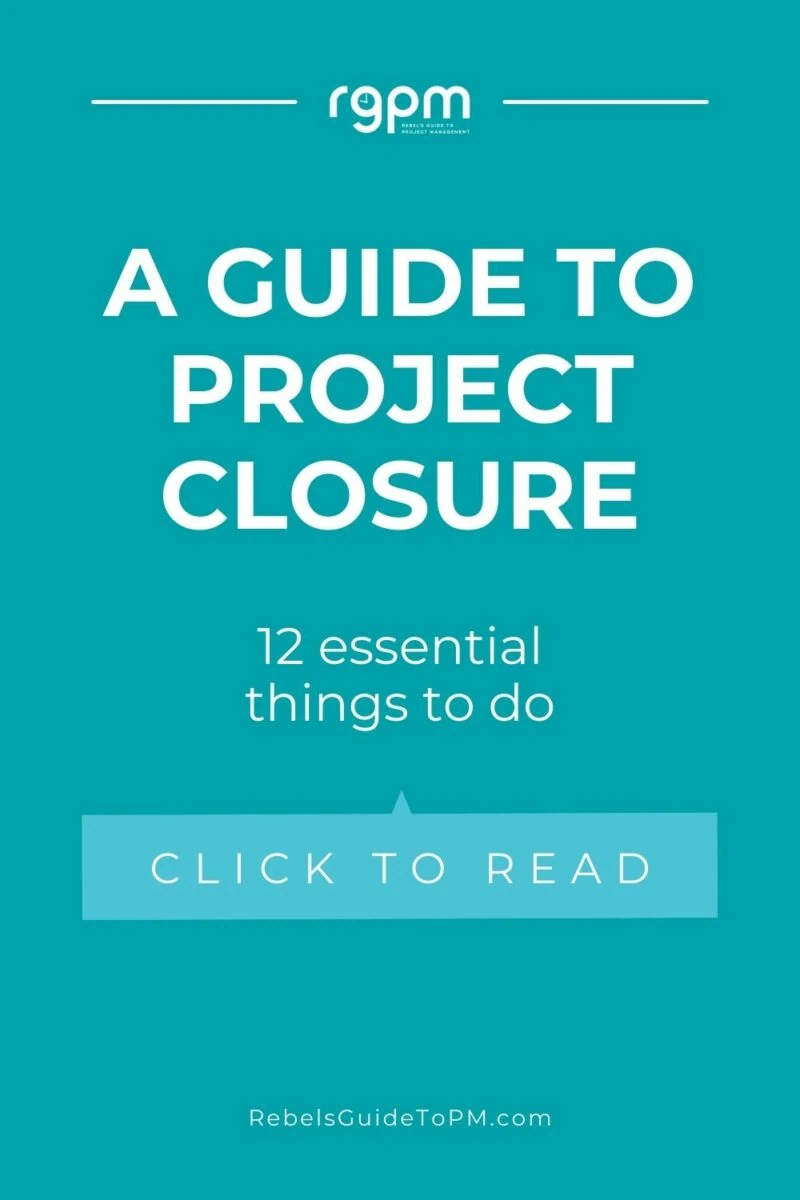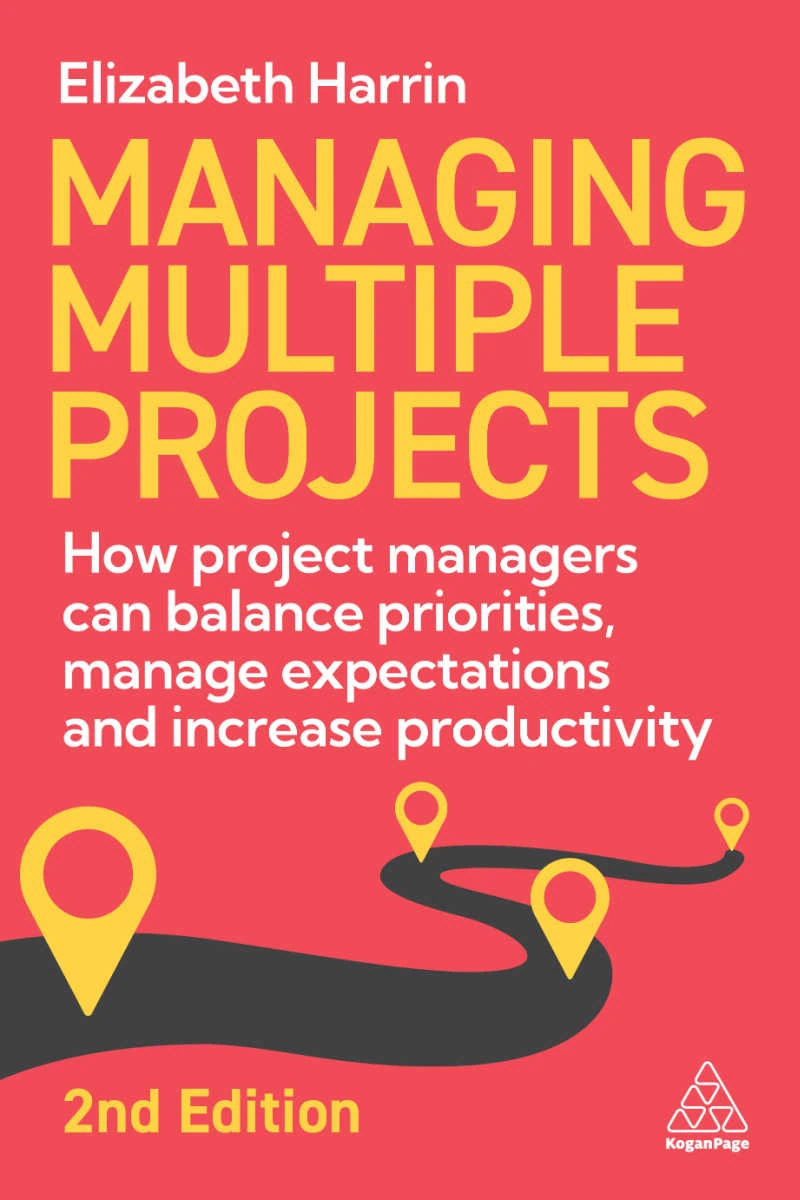A Guide to Project Closure: 12 Essential Things To Do
It’s project completion time. That’s the last step of the ‘traditional’ predictive (waterfall) project lifecycle, but even
You’re at the end of your project. Your timesheet has a few solitary hours left to book against this work. It feels like the end of an era, but it isn’t over just yet. There are still more tasks to get through before your role leading this project is complete.
Here is a checklist of 12 things that you should do during project closure to make sure the work is wrapped up efficiently.
1. Create and circulate the project closure document
The biggest job is to complete the project closure report. This is a document that summarizes how the project went. It should include:
The project closure document should include:
- A description of your project: normally the same 3-line summary you’ve used on all the other project reports
- The project’s objectives, acceptance criteria and/or success criteria
- A statement of how well you met each of the objectives and success criteria along with any variances
- A statement of how well the project kept to the original budget and schedule, along with an explanation of any significant variances
- Sign off from the sponsor and yourself.
Basically, it’s a document that compares what you planned to do with what was actually done and explains the variances if there are any (there will be – trust me). It provides formal notice that the project structure no longer exists and the work, as far as the team is concerned, is done.
Depending on your Project Management Office systems you’ll either be producing an electronic document (use a template – don’t create one from scratch) or an entry in workflow management or project management system that is equivalent to completing an online form.
Your project closure document won’t be of interest to all stakeholders but for those who do want to see it, sending it out on your project’s last day draws a line under your project work and helps reinforce the fact that the project is over.
The PMO will want a copy and you should also send one to the project sponsor and any other senior stakeholders. Copy your immediate project team in and save a copy for your own records as well. Finally, make sure that the operational manager taking over the deliverables from you also has a copy.
2. Finish the handover
There will be some areas of your project that you haven’t been able to brief the operational team on until the project is coming to a close.
The closing phase is the time to get that final appointment with the people who will be running with the products you have delivered and make sure that they understand everything.
Let them know where to find:
- A log of all the decisions that were taken on the project and the reasons why
- Minutes of project team meetings
- Email archives
- Contracts including draft versions and the discussion trail around what changes were made
- Change logs including anything that wasn’t incorporated into the project but that would make a good enhancement for the future.
- Any other useful documentation.
Your project plans should include the work required to complete the handover to operations.
3. Archive project documents
Move all your electronic project documentation to an archive. This can simply be a folder called ‘Closed Projects’: there’s no need for anything fancy.
You still need access to the files in case anyone has questions or you want to reuse anything for a future project. But you don’t want all those documents clogging up your working folders when you move on to your next projects.
4. Update project status
Update the status of all items on electronic To Do lists as closed. They are closed, aren’t they? If not, they should be included in your project handover so that the operational team can pick up the work.
5. Circulate lessons learned
You have probably had one or more lessons learned meetings by now. Whether you’ve shared the output in a wiki, as a document, or in some other format, everyone should know where to find it. The project closure phase is the time to circulate that lessons learned information again, so it is fresh in their minds when they move on to a new project.
Double-check that the PMO has the lessons too.
It’s possible that you haven’t done your final post-project evaluation meeting – your team may want some reflection time between the official last day of the project and sharing their thoughts, or you may not have been able to get everyone together before project closure. That’s fine, but make sure it doesn’t get forgotten

6. Save important emails
However good you are at using shared network storage for your files you have probably ended up with important emails in your inbox. You can save these down as individual files in your project folders. You can also save attachments on the network or an online file storage system in an appropriate folder.
You could package up all the emails that relate to the project and store them as an archive with your other project artefacts for future reference.
However, if you are anything like me, a lot of the traffic won’t be relevant to the operational team or is a duplicate of what is already in the main project files, so I only save the essential ones.
7. Tell everyone the project is closed
You’d be surprised at how many stakeholders don’t know that your project is closing! Part of the project completion process is to get in touch and tell them.
A quick email will do, although it’s a nice touch to call your major stakeholders personally. Leaving a message is fine, as long as you include your contact details so they can get back to you.
Let them know who they should get in touch with now their main point of contact isn’t you. If you don’t, they’ll assume they should still approach you with questions and you’ll never feel as if you’ve moved on to new work.
If particular stakeholders have been really helpful in getting the job done, now is the time to thank them. You can do this in writing via email and copy in their manager if you think that’s appropriate. Sometimes it’s good to let people further up the chain know their teams have done an outstanding job.
8. Call your sponsor
Your sponsor will have been copied in other documents and emails that you’ve been sending on your project’s last day, like the project closure report and the lessons learned documentation. But you should still give them a ring.
Thank them for their involvement and support. Highlight anything that you feel they should know that has come out of your handover to the operational team. If you are moving on to a new project talk to them about that so they know where to find you if they have any future opportunities.
Don’t skip this step, even if your working relationship with your sponsor wasn’t that great. Ending the relationship on a positive, professional note will be how the sponsor remembers you and that can be important for your career development in the future.
9. Close out the budget and contracts
Your project budget and contracts are closed out at project completion. Make sure that everything that needs to be done is done. The easiest way to do this is to talk to the person you’ve been dealing with in Finance and make sure they’ve got everything they need to shut down the project budget.
You may want to do some vendor performance analysis on the suppliers you used to inform teams using those same suppliers in the future. A quick note about how you found working with them and what their performance to the contract was can make a big difference for future procurement exercises.
This can be stored with your lessons learned paperwork or passed to the person in the Project Management Office who deals with vendor relations.
Tip: Check the contract closure process with Procurement. The contract might not actually need to be closed at this point, especially if the project is moving into an ongoing relationship with the vendor.
10. Release the team
‘Releasing the team’ simply means being aware that you can’t assign them to any more project tasks. They are done. They go back to their home team and their functional manager will assign them to work on something else.
This can happen at successful project completion, or beforehand if the project closes prematurely.
Provide some feedback on project team performance to the individual line managers so they have an idea of how their colleagues contributed.
But before they go…
11. Thank the team
Finally, don’t forget to say thank you to your project team! It’s better to do this in person if you can so get them together for a final debrief and to say thank you. If you have a corporate recognition scheme hopefully you have applied to this in good time and will be able to distribute any tokens at this meeting.
Don’t worry if you can’t get everyone together. Call around the people who aren’t able to be there, thank them, and ask what they are going on to next. You never know when these people might turn up on a future project team (or even as a future project sponsor) so it helps your professional network to stay in touch.
Depending on how long you’ve been together, splitting up the team can be quite emotional. I have left high-performing project teams in the past and felt sad that I wouldn’t have the chance to work with those people again. If you feel anyone will have difficulty adjusting to their new roles then you could have a quiet word with them or their manager.
12. Celebrate!
Saying thank you isn’t really enough in my opinion. If you’ve completed your project successfully, you should celebrate! Frankly, you should celebrate even if you didn’t complete your project successfully because the organization would have learned something valuable and that’s a good thing too.
Celebrations don’t have to be big and expensive. You can go out for drinks after work, or take everyone to lunch. Or everyone can bring a dish and you can have an office picnic. The social and recognition elements of celebrating are more important than how much you spend or where you go.
Finish strong
Completion is one of the most important project management processes. This is actually quite a lot of work to fit into the closure phase, so make sure you give yourself enough time.
For short projects, it’s possible to get it all done and wrap up the project the same day. If your project has been a larger, more complex piece of work then your closure activities may take place over a couple of days.
It’s better to take the time to get them right and accept doing the tasks over several days than try to complete everything in a rush and miss a few steps on the way.
Your next steps
- Check out these ways to celebrate success as a team
- Get a project closure template
- Use the checklist above to create your own project completion plan and build the tasks into your current schedule

